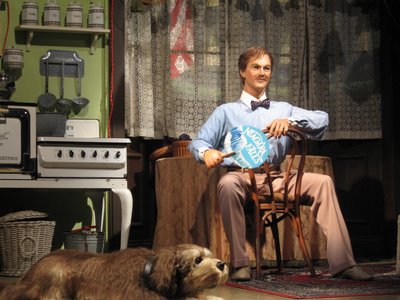Audio animatronic characters remain fixed in one place with relatively limited movement, but they can talk and sing and, best of all, remain forever young to tirelessly entertain generation after generation of Disney visitors.
Many attractions at Walt Disney World feature some audio animatronic elements, while some shows such as The Carousel of Progress, Walt Disney’s Enchanted Tiki Room, or the American Adventure are entirely acted by audio animatronic characters. Fittingly, animatronic technology goes back to the earliest days of Disney theme parks and some of the very first attractions ever to thrill visitors to the world that Walt created.
The History Of Audio Animatronics
Disney began to develop audio animatronic technology in the early 1950s. A dancing figurine that performed a choreographed routine was Disney’s first attempt at animatronic robotics, but the character’s movement was fairly limited, and the routine was not synchronized with sound. One of the earliest audio animatronics that Disney successfully used was the squid from the movie 20,000 Leagues Under the Sea.

Fully synchronized audio animatronics made their debut at Disneyland Park in Anaheim with the colorful Enchanted Tiki Room. This show debuted in 1963, and features a variety of tropical birds and wooden tikis that speak a sing a variety of tunes. A similar showed, originally named Tropical Serenade, opened when Florida’s Magic Kingdom made its debut in 1971.
Evolving Technology
The Enchanted Tiki Room used a pneumatic system to power its figures, and could not be adjusted for speed, volume, or power. Audio signals were used to activate reeds which moved the bird bills and tiki mouths up and down. Disney was able to use more advanced technology with the creation of the Carousel of Progress, incorporating a combination of analog and digital signals which could vary the voltage sent to the characters by varying the volume of the tones.
Audio animatronic shows are very complicated to program, even with the use of modern technology. When the Carousel of Progress was in development in the 1960s, the process was even more complex and painstaking. Joy sticks and potentiometers controlled the motion of the figures, and audio was recorded using 35mm magnetic stock. Actions and tones were all recorded separately before being added to a single master reel and synchronized. Experienced programmers could use a harness that would program and record their movement.
NASA Technology
Declassified NASA technology played a role in renovations to the Carousel of Progress after it moved to Florida, and in the creation of newer audio animatronic presentations. This technology allowed multiple actions and tones to be recorded at once. Later renovations and creations also attempted to solve the noticeably stiff and robotic nature of the characters’ movements. Extending motion end-points and slowing movements as they finished helped to create a more natural appearance and keep figures from shaking when their movements came to abrupt stop.
Audio Animatronics are an important part of the current and historical landscape at Disney theme parks. These characters represent Disney innovation and can provide a fascinating look at technological evolution. From the simplicity of the Enchanted Tiki Room to the sophistication of Stitch’s Great Escape, audio animatronics are part of Disney’s past and present, and almost certainly of its future.

